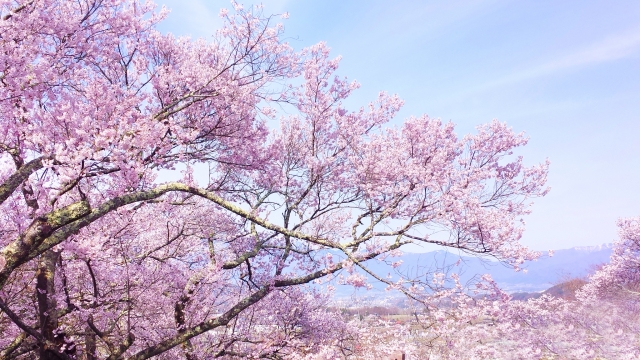Spring is on its way when we see the beautiful blooming Sakura. The cherry blossom front, also known as Sakura Zensen (桜前線), moves across Japan from February to May, starting in the south and moving north. In Tokyo, you can see the whole blossoms of Sakura at the end of March, while the Tohoku and Hokkaido areas offer a chance to view them in late April to early May. These flowers are a spring specialty, offering a stunning display of light pink blooms for only a few days each year. Then, as the cherry petals fall, we can feel the climate warming up.
Iconic Items in Different Seasons
Japan has four distinct seasons, each with a seasonal specialty. For example, Sakura represents spring, a cicada’s voice represents summer, pampas grass represents autumn, and snow represents winter. These are examples of symbolizing seasons. For example, a glossary of seasonal terms (歳時記 “Saijiki”) for haiku (俳句), a short form of Japanese poetry, has more than 4,000 season words (季語 “Kigo”).
Close Attention to Seasonal Cues
In Japanese history, nature and seasonal changes have been closely observed and celebrated through poetry like haiku and waka. Waka (和歌), an older form of Japanese poetry, features many renowned poems about the seasons. The oldest collection of Japanese poetry, Manyoshu (万葉集), from the 7th century, also contains numerous poems that observe and appreciate nature and its four seasons. Even today, writing haiku remains popular in Japan across all age groups.
Seasonal Changes of Clothes (“Koromogae”)
In Japan, the four seasons lead to a custom of changing clothes according to the weather. This practice, known as “Koromogae (衣替え),” happens twice a year during summer and winter. It’s about switching to comfortable clothes and adapting clothing designs and accessories to match the season. For example, people wear light colors like cherry blossoms in spring and darker colors like maples in autumn.
Japanese Habits to Fit Around?
The Japanese are sensitive to seasonal changes and have adapted their habits accordingly. It’s also important to recognize the internal changes happening within Japan.
